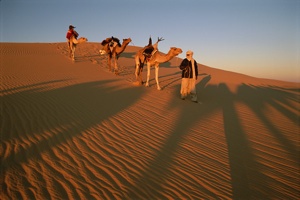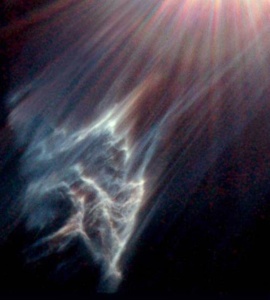 Politics
Politics  Politics
Politics  Humans
Humans The 20th Century’s 10 Most Famous Centenarians
 History
History 10 Influencers Who Lived Centuries before Social Media
 Miscellaneous
Miscellaneous 10 Ancient Etiquette Rules You Never Knew Existed
 Our World
Our World Planet Earth’s 10 Most Hardcore Natural Creations
 Movies and TV
Movies and TV 10 Times Twin Movies Competed with Each Other
 The Arts
The Arts 10 Masterpieces Plucked from the Artist’s Subconscious
 Crime
Crime 10 Fascinating Facts about Rikers Island
 Pop Culture
Pop Culture 10 Things You Might Not Know about Dracula
 Weird Stuff
Weird Stuff 10 Everyday Activities That Were Once Considered Illegal
 Politics
Politics 10 U.S. Presidents Who Cheated on Their Wives
 Humans
Humans The 20th Century’s 10 Most Famous Centenarians
 History
History 10 Influencers Who Lived Centuries before Social Media
Who's Behind Listverse?

Jamie Frater
Head Editor
Jamie founded Listverse due to an insatiable desire to share fascinating, obscure, and bizarre facts. He has been a guest speaker on numerous national radio and television stations and is a five time published author.
More About Us Miscellaneous
Miscellaneous 10 Ancient Etiquette Rules You Never Knew Existed
 Our World
Our World Planet Earth’s 10 Most Hardcore Natural Creations
 Movies and TV
Movies and TV 10 Times Twin Movies Competed with Each Other
 The Arts
The Arts 10 Masterpieces Plucked from the Artist’s Subconscious
 Crime
Crime 10 Fascinating Facts about Rikers Island
 Pop Culture
Pop Culture 10 Things You Might Not Know about Dracula
 Weird Stuff
Weird Stuff 10 Everyday Activities That Were Once Considered Illegal
Top 10 Amazing Earth Facts
As well known and well traveled as our planet is, there are still new things being discovered every day. In fact, most of our oceans haven’t even been explored yet which is why when new depths are located; they often come with hundreds of new species. Rain forests offer up new animals and plants as often as we can explore them. The Earth is constantly changing, shifting, and exposing new secrets for humans to marvel at. It took many years and many great minds to solve the problem of getting through Earth’s atmosphere into the wide expanse of space beyond. Here are ten amazing facts about our home that you may not be aware of.
10. The Atmosphere
Many layers of atmosphere coat our planet including the mesosphere, ionosphere, exosphere, and the thermosphere, but it’s the troposphere, closest to the planet itself, that supports our lives and is, in fact, the thinnest at only about 10 miles high.
9. Deserts
Believe it or not, most of the Earth’s deserts are not composed entirely of sand. Much, about 85% of them, are rocks and gravel. The largest, the Sahara, fills about 1/3 of Africa (and it is growing constantly) which would nearly fill the continental United States.
8. The Big Blue Marble
The Earth is, in fact, not really round. It is called an oblate spheroid meaning it’s slightly flattened on the top and bottom poles.
7. Salty Oceans
If you could evaporate all the water out of all the oceans and spread the resulting salt over all the land on Earth, you would have a five hundred-foot layer coating everything.
6. Lakes and Seas
The largest inland sea (or, sometimes called a lake) is the Caspian Sea which is on the border of Iran and Russia.
5. Mountains
The Andes Mountain range in South America is 4,525 miles long and ranks, as the world’s longest. Second Longest: The Rockies; Third: Himalayas; Fourth: The Great Dividing Range in Australia; Fifth: Trans-Antarctic Mountains. For every 980 feet you climb up a mountain, the temperature drops 3-1/2 degrees.
4. Deep Water
The deepest lake in the world is in the former USSR and it is Lake Baikal. It has a length of 400 miles, a width of roughly 30, but its depth is just over a mile: 5,371 feet down. It is deep enough, so is speculated, that all five of the next largest lakes: The Great Lakes could be emptied into it.
3. Shaky Ground
Earthquakes can be catastrophically destructive and many a year are deadly. However, the Earth releases about 1 million a year, almost all are never even registered.
2. Hot, Hot, Hot
Most people believe that Death Valley, California, U.S.A. is the hottest place on Earth. Well, occasionally it is, but the hottest recorded temperature was from Azizia in Libya recording a temperature of 136 degrees Fahrenheit (57.8 Celsius) on Sept. 13, 1922. In Death Valley, it got up to 134 Fahrenheit on July 10, 1913.
1. Dust in the Wind
Experts from the USGS claim that roughly 1,000 tons of space debris rains down on Earth every year.
Source: Uncle John’s Bathroom Reader


















